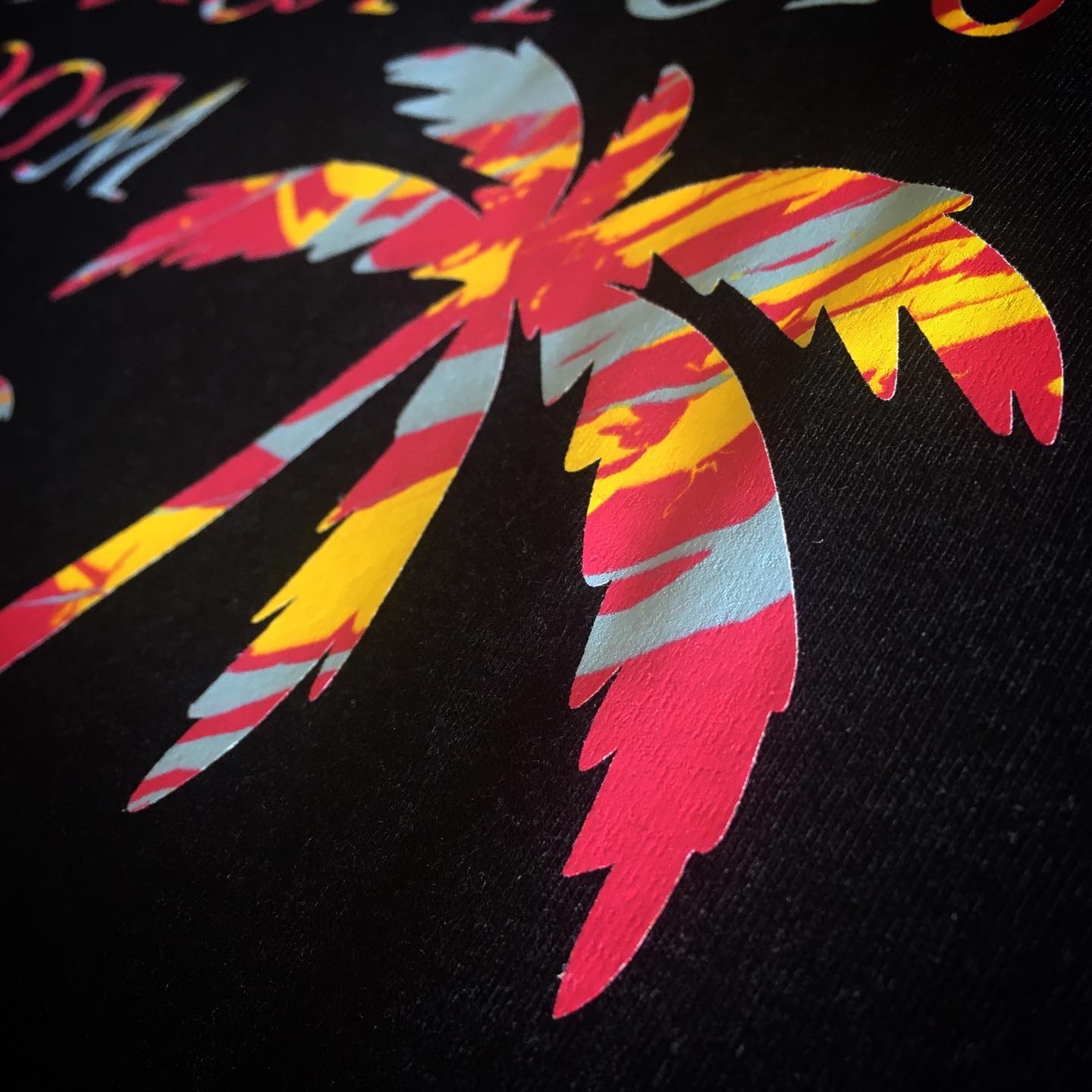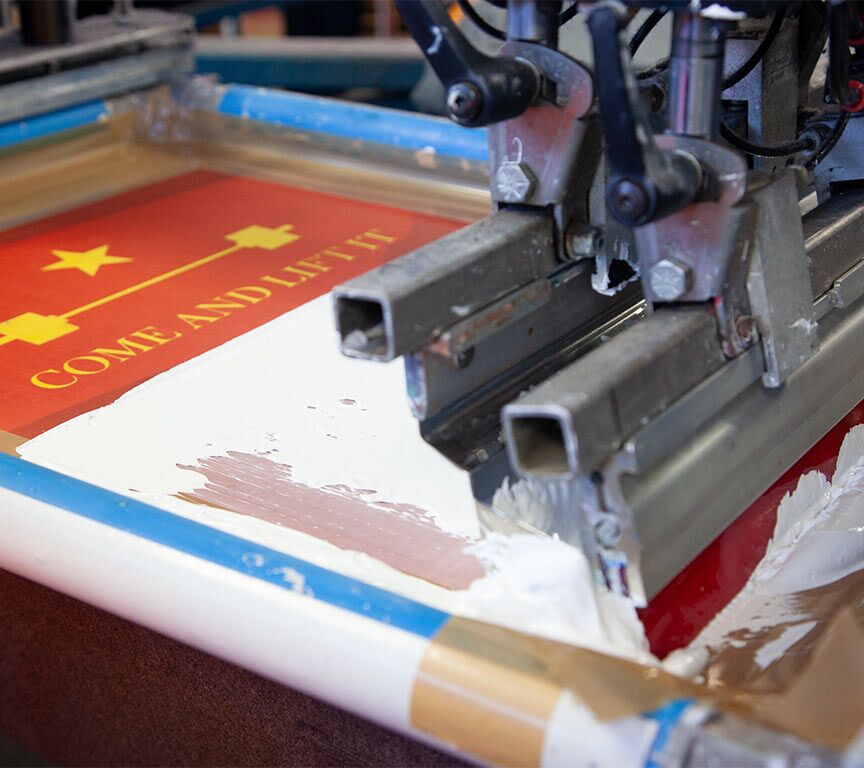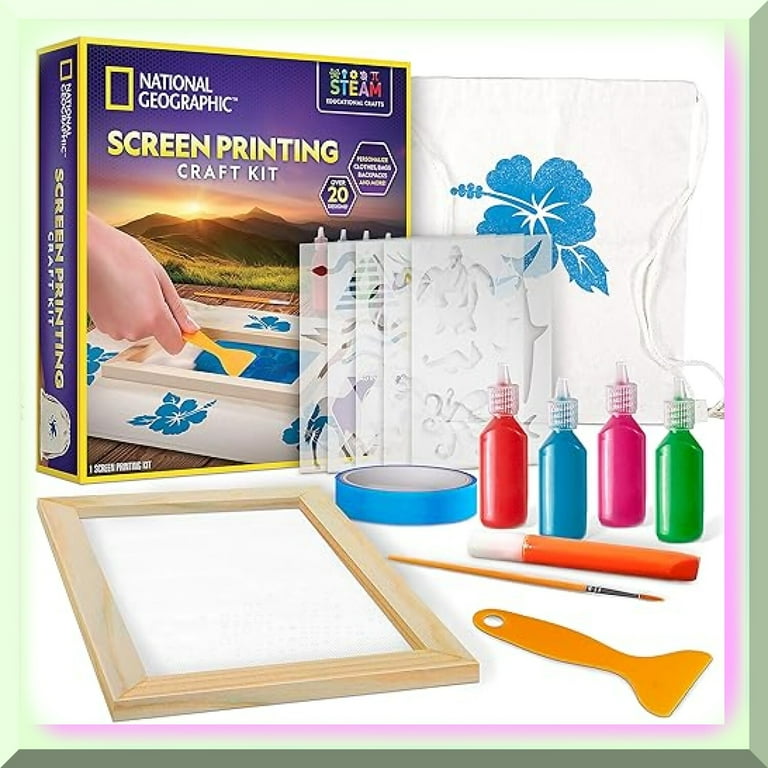High-Volume T-Shirt Printing for Schools and Organizations
High-Volume T-Shirt Printing for Schools and Organizations
Blog Article
Screen Printing Uncovered: Whatever You Required to Learn About T-Shirt and Garment Printing Strategies
If you have actually ever before asked yourself how those lively styles wind up on your favorite t-shirts, you remain in the best place. Display printing is a fascinating technique that integrates art with strategy, using countless possibilities for imagination. Understanding the fundamentals, from tools to ink selections, can greatly affect your outcomes. All set to explore the important elements that make screen publishing an art kind? Let's reveal the details that can boost your projects.
The Fundamentals of Screen Printing: How It Functions
When you dive right into screen printing, you'll discover it's both a science and an art. At its core, display printing involves creating a stencil, or screen, that enables ink to go through only in certain locations (screen printing kit). You start by selecting your design and preparing your display with a light-sensitive solution. When you expose this emulsion to light, it sets, leaving your style as an adverse room.
Setting the display over the material, after that use a squeegee to press ink through the screen onto the garment. Each action is crucial, and grasping them will raise your screen printing skills, transforming straightforward garments right into special, expressive items.
Kinds Of Display Printing Methods
As soon as you grasp the essentials of screen printing, it's time to check out the different techniques that can boost your designs. One prominent approach is standard display printing, where ink is pushed through a stenciled screen. This strategy is great for bold, vivid shades. There's water-based ink printing, which provides a softer feeling and is green, but it needs a various method to curing.
If you're aiming for fine details, think about discharge printing. This strategy removes dye from the textile, leaving a soft, classic appearance. An additional alternative is plastisol printing, recognized for its toughness and dazzling shades, making it a favorite for many brand names. Finally, experiment with halftone printing to produce slope results and intricate designs. Each strategy has its one-of-a-kind charm, so don't hesitate to attempt them bent on discover what fits your design best!
Important Devices for Screen Printing
To achieve spectacular outcomes in screen printing, having the best tools is essential. You'll require a durable display printing structure, which holds the mesh that transfers your style onto the garment. Next off, invest in top notch mops; these are necessary for applying ink equally across the screen.
Selecting the Right Inks and Products
When picking inks and materials for screen printing, you need to consider the kind of ink that works best for your project. Consider material compatibility to guarantee your designs look excellent and last long. Also, explore environmentally friendly ink options to make your printing process more sustainable.
Kinds Of Screen Inks
Selecting the ideal screen ink is necessary for achieving vivid, sturdy prints that meet your job's requirements. There are several types of display inks to examine. Specialized inks, such as glow-in-the-dark or metallic, can include one-of-a-kind effects to your styles.

Material Compatibility Factors To Consider
Recognizing textile compatibility is crucial for attaining top quality display prints, especially since different materials respond distinctly to different inks. Constantly check your inks on example fabric to assure they adhere effectively and preserve shade integrity. Additionally, keep in mind that textile weight and structure can affect the last result, so selecting the appropriate ink and product combo is crucial for your task's success.
Eco-Friendly Ink Options
Eco-friendly inks are ending up being a popular option for screen printers who desire to reduce their ecological influence while preserving quality. When picking inks, think about water-based inks, which are less unsafe and easier to clean up compared to traditional solvents.
In addition, look for inks made from renewable energies, such as soy or vegetable-based options. By choosing the best inks and materials, you'll not just produce stunning styles however likewise add to a more lasting printing process. Make the button, and your prints will mirror your commitment to the environment!
Preparing Your Style for Screen Printing

File Style Needs
To ensure your layout looks dynamic and sharp on textile, you'll need to pay close interest to file layout demands for screen printing. Make certain your style has a clear history to protect against unwanted white sides on your prints. Maintain color settings in mind; CMYK is basic for display printing, so convert your RGB develops accordingly.
Color Splitting Up Techniques
Color separation is an essential action in preparing your design for display printing, and grasping it can greatly boost your print quality. You'll require to break your style into private shades, as each color calls for a different screen during printing. This accuracy not just assures exact color depiction but likewise streamlines the printing process.
Resolution and Dimension
Attaining the most effective cause screen printing starts with ensuring your layout has the appropriate resolution and dimension. Preferably, your art work should be at least 300 DPI (dots per inch) for sharp, clear prints. If you use lower resolution, your last item could look pixelated and amateur.
When it concerns dimension, consider the dimensions of your print area. Layout your artwork to match the last print dimension, ideally developing it in the real measurements you'll be publishing. In this manner, you'll avoid any type of unforeseen scaling concerns.
Always examine your layout in both vector and raster styles. Vector graphics can be scaled without shedding quality, making them perfect for screen printing. Preparing properly will guarantee your design looks incredible on every garment!
Step-by-Step Display Printing Process
Screen printing is a dynamic procedure that enables you to develop dynamic styles on numerous official source surface areas. To obtain started, you'll need a display, emulsion, and your selected ink. First, prepare your screen by cleaning it extensively. Next off, apply the emulsion evenly and allow it completely dry in a dark location. When dry, subject your screen to light with your layout put on it, which will set the emulsion where the light hits, creating a pattern - screen printing kit.
Pour ink onto the display and utilize a squeegee to push the ink via the stencil onto the material. Lift the display thoroughly and allow the print dry. You've efficiently display published your style.
Tips for Effective Display Printing Projects
While you're diving into your screen printing jobs, keep in mind that preparation is vital to success. Start by collecting all your products-- inks, displays, garments, and mops. browse around these guys A clean workspace assists prevent undesirable errors, so tidy up before you start.
Following, validate your art work is high-resolution and properly sized for your garment. Check your display for appropriate direct exposure and clean it extensively to stay clear of smudges. When mixing your inks, comply with the manufacturer's standards to attain the best uniformity.
Throughout printing, use even stress with your squeegee for constant outcomes. Do not rush; take your time to confirm each print satisfies your standards. After printing, allow your garments completely dry totally before dealing with or packaging them.
Finally, constantly keep an example of your work for future recommendation. This means, you can analyze your progress and improve your methods gradually. Pleased printing!

Regularly Asked Concerns
How much time Does It Require To Establish a Screen Printing Task?
Setting up a screen printing work generally takes about thirty minutes to an hour. You'll prepare the screens, mix inks, and readjust journalism. The moment differs based on intricacy and experience, so remain organized!
Can I Publish on Various Fabric Keys In Utilizing the Exact Same Method?
Yes, you can print on various material types utilizing the same technique, but you'll need to adjust your setups and inks. Some fabrics soak up ink in a different way, so experimenting guarantees the most effective results for each material.
What Are Typical Errors to Stay Clear Of in Screen Printing?
When screen printing, prevent common mistakes like making use of the wrong ink, disregarding proper exposure times, or missing pre-press checks. Always check your configuration and maintain clean displays to guarantee top quality outcomes each time.
Just How Can I Effectively Tidy and Preserve My Display Printing Devices?
To properly tidy and keep your display printing tools, you need to frequently clean screens with ideal solvents, examine squeegees for wear, and guarantee all devices are saved completely dry and dust-free. Uniformity boosts and prevents costly repair work performance.
Is Screen Printing Environmentally Friendly Contrasted to Various Other Approaches?
Screen printing can be a lot more environmentally friendly than various other approaches, specifically if you use water-based inks and eco-conscious materials. By selecting sustainable products and methods, you lower waste and decrease your influence on the earth.
Screen Printing Uncovered: Whatever You Need to Know Concerning Tee Shirt and Garment Printing Techniques
At its core, screen printing includes developing a pattern, or display, that enables ink to pass with only in details areas. Position the display over the material, after that make use of a squeegee to press ink via the screen onto the garment. One prominent technique is typical screen printing, where ink is pressed through a stenciled screen.When selecting inks and products for display printing, you require read this article to take into account the kind of ink that functions ideal for your job.
Report this page